Pilot Chronicles: A long night flight to Mexico City
Take a peek behind the scenes of airline pilot life. In “Pilot Chronicles”, we let our instructors, who are all airline pilots, give you some insight in their daily life as a pilot. This time, we get on board of the Queen Of The Skies: the Boeing 747. Instructor Pieter takes us along on one of his cargo flights to one of his favourite airports: Mexico-City. The airport has specific challenges due to its high elevation and mountains. Get ready for a long night!
Saturday Afternoon 3:25 PM, my working day has started with a nap. As I have an evening flight to Mexico City and I am coming from two weeks of vacation, my body clock is adjusted to “normal people times”, meaning that I was awake at 8:30 this morning and that a small nap in the afternoon is a lifesaver before a night flight.
– Crew ID
– Passport (with valid VISA)
– Credit Card (I use Revolut mainly abroad, a free credit card with a great app that helps countering fraud and theft and helps you keep track of spendings)
– License and medical
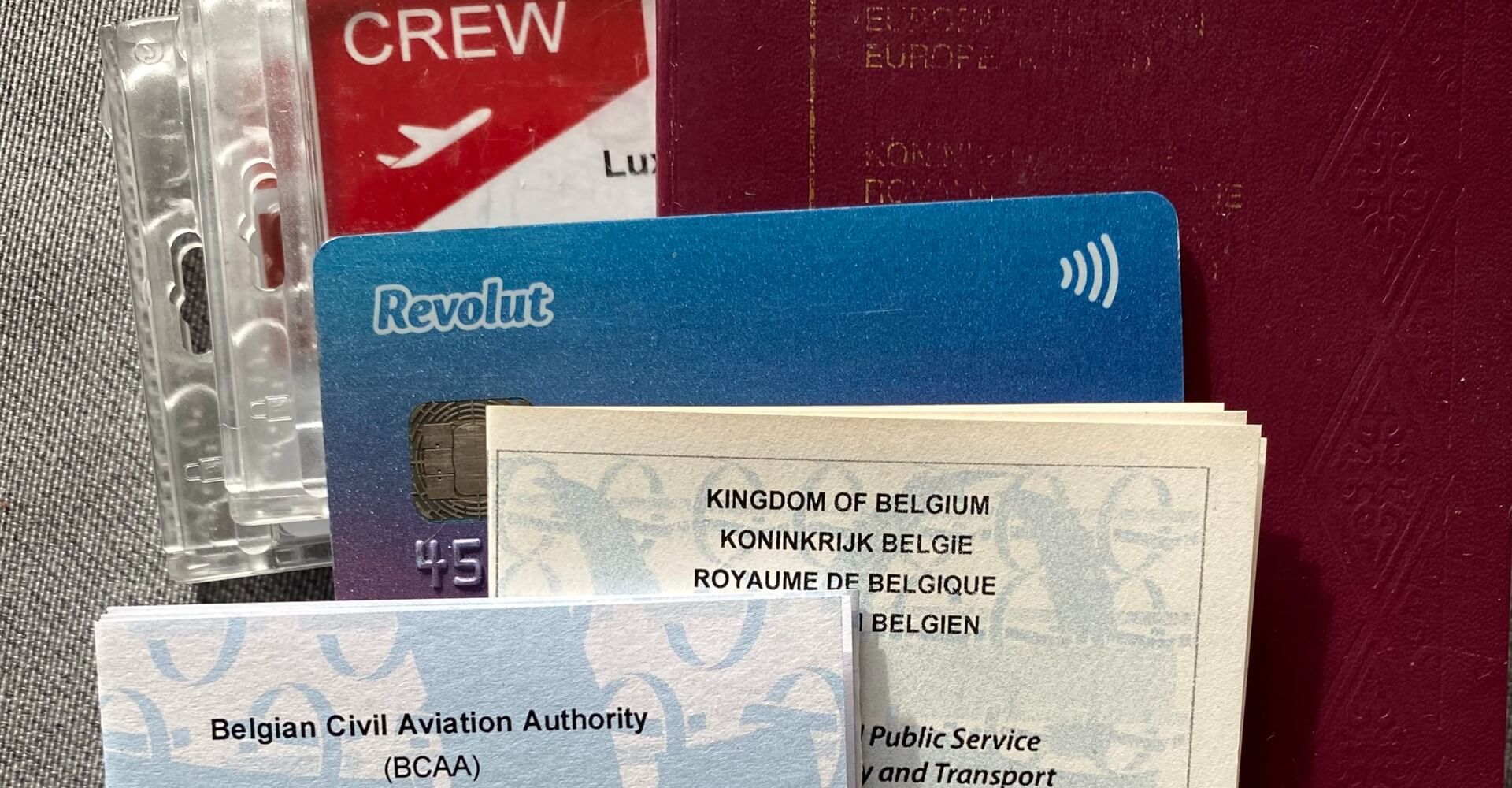
Flight preparation
After arriving in Luxembourg, I learn that the flight has one-and-a-half-hour delay. Welcome to the world of freight! The flight plan did already arrive however, giving us information about weather, NOTAMS, fuel requirements, payload, flight times and routings. With a flight time of 11 hours and 7 minutes, this is one of the longest flights in our network. Luckily, we are with a crew of three pilots, meaning that we can all take some rest in the bed bunks during the flight.
During our preparation, we look at enroute weather conditions, the current weather in our departure airfield and the expected weather in our destination and alternate aerodromes. The weather enroute is generally good, with some strong winds in Keflavik (Iceland), one of our enroute alternates: Autumn has arrived in some parts of the world.
Some 80km south-east of our destination, there is an active volcano (the Popocatepetl) that catches our eye but it is not foreseen to interfere with our flight execution or routing.
Furthermore, we look at the planned levels, the amount of contingency fuel and we decide as a crew how much, if any, extra fuel is required. When deciding on extra fuel, we always take our maximum weights into account for take-off and landing.
Mexico City is a challenging destination as it is situated between high mountains and the city itself, with a population of over 20 million people one of the largest cities in the world, is located at a high elevation of 7.300 feet above sea level (2.200 meters). This means that we will come in at much higher ground speeds than normal because of the thin air. It is, however, one of my favourite approaches as landing on Runway 05 (the usual) takes you right over the city.
As a crew, we decide to take 4000 kilograms extra fuel to give ourselves an extra 20 minutes of flying time to cater for some thunderstorm over the Gulf of Mexico and in the Mexico City area. Part of these 4000 kilograms (1200 of it) will just be burned off because of the extra weight of this extra fuel. An aircraft doesn’t know the difference between payload or fuel: the heavier we are, the more fuel we consume. Total fuel on board today: 143.000 kilograms.
We divide the roles: one will be pilot flying and he will be doing the take-off, landing and autopilot manipulations, one will be pilot monitoring, responsible for ATC, flight follow-up, getting Oceanic clearances and so on. The third one will be acting as a relief pilot. He will take one of the pilot seats in cruise flight, making sure that the other two pilots can have a rest in-flight as well. Apart from that, the relief pilot occupies the extra seat in the cockpit (the jump seat) during take-off and landing, acting as an extra pair of eyes and ears. On a long night flight, with a challenging approach, these extra eyes come in very handy. I’m the lucky one today as I get to be the pilot flying on this flight, an exciting approach in Mexico awaits (well… after more than 11 hours).
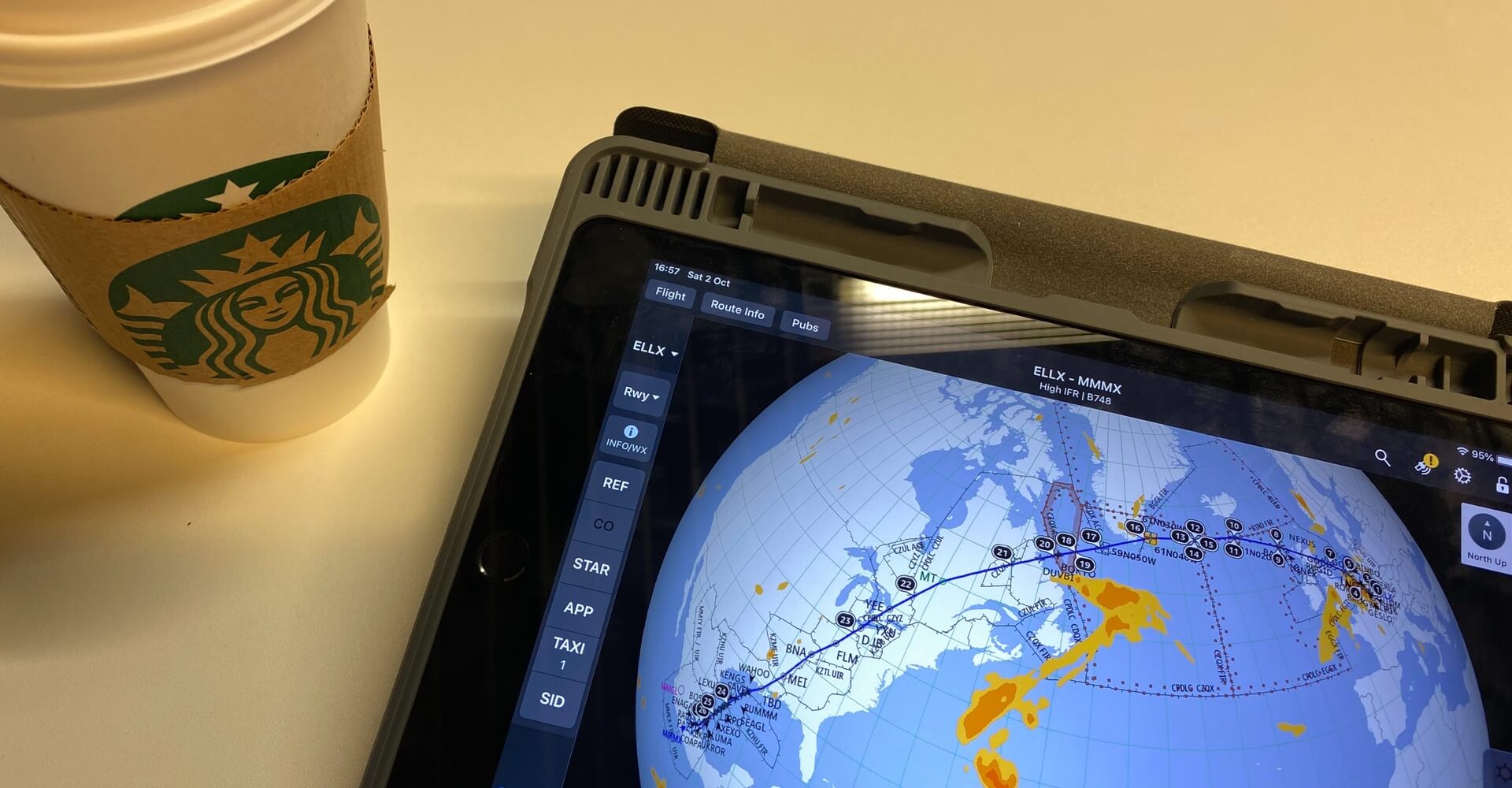
Departure
As soon as we board, we get to work. The freight is already on board. We just have to perform some checklists, load the routing, compare performance figures for take-off and brief the departure. All this takes us about half an hour and before we know we are pushing back and starting our General-Electrics engines, two at a time.
We leave rainy Luxembourg behind and passing 20.000 feet the captain goes for his rest. We each have 3 hours and 25 minutes “bunk” time, giving us a proper, well-needed rest.
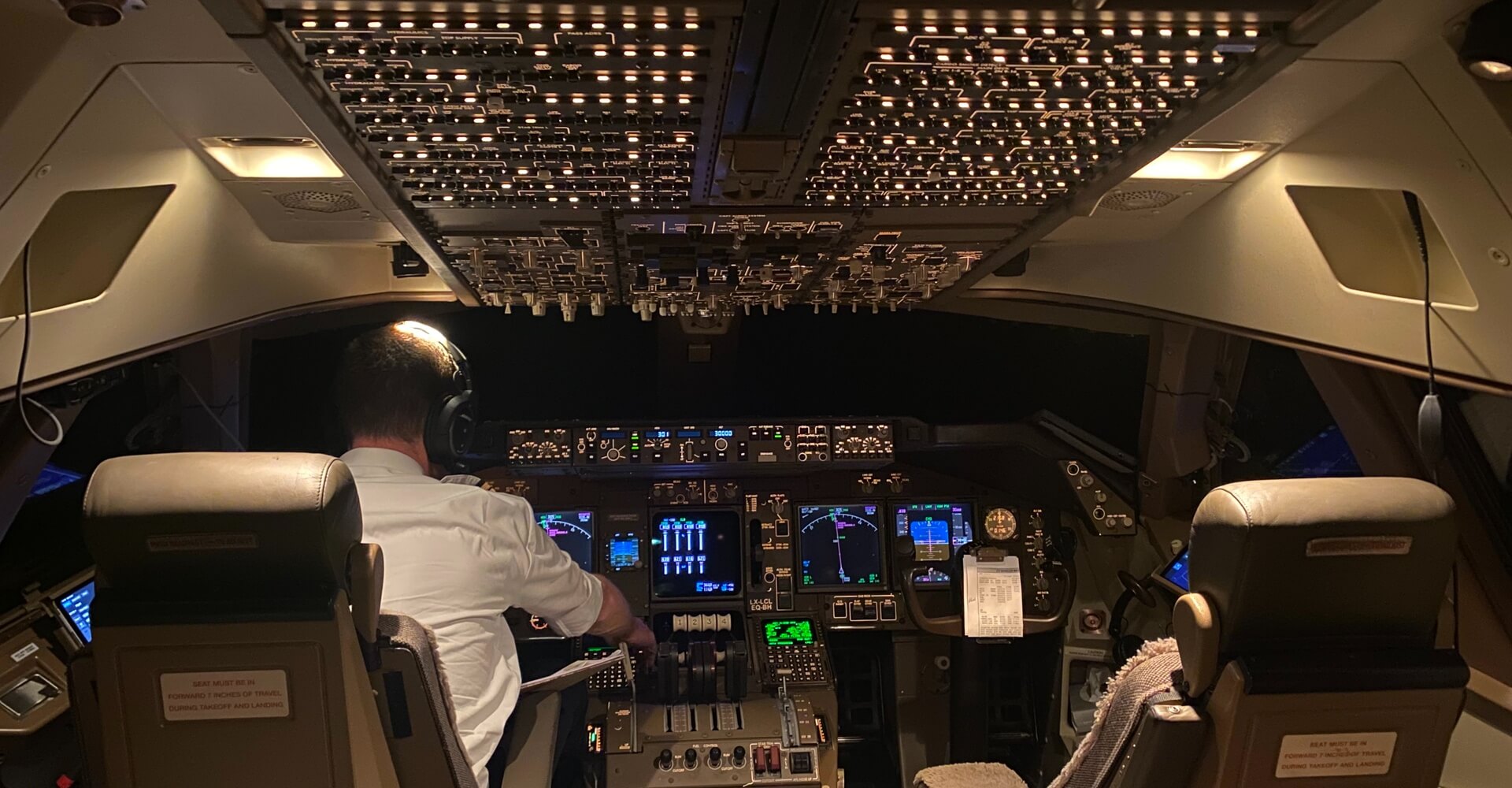
Oceanic clearance
The relief pilot occupies the left seat and after checking in with Maastricht control and reaching cruising altitude, we start preparations for our Oceanic Clearance. Even though we do receive an ATC clearance for our filed IFR flight plan on the ground already, the Oceanic part of the clearance is a separate one. As there is little to no radar coverage over the North-Atlantic Ocean, aircraft are separated using 4D spacing: vertically, laterally and by time. To accommodate all the traffic in the often-busy North-Atlantic airspace, aircraft are given an assigned routing, altitude, and fixed Mach Number. Today our Atlantic clearance takes us high up North to avoid strong jet stream winds from the west. We will pass just south of the tip of Greenland and enter domestic airspace again over Canada.
Once the clearance is received, we check all the waypoints, and plot our routing on a paper map. Indeed, despite all the technology (iPads, flight management computers etc.), we still keep a paper backup plot of our routing on an Atlantic Plotting chart. We also plot the equal-time-points between our alternate airfields. It’s at times like these that you realize that what you learn during ATPL theory training, is more than only preparing for an ATPL multiple choice exam. It’s knowledge that will come in handy as you start expanding your professional horizon.
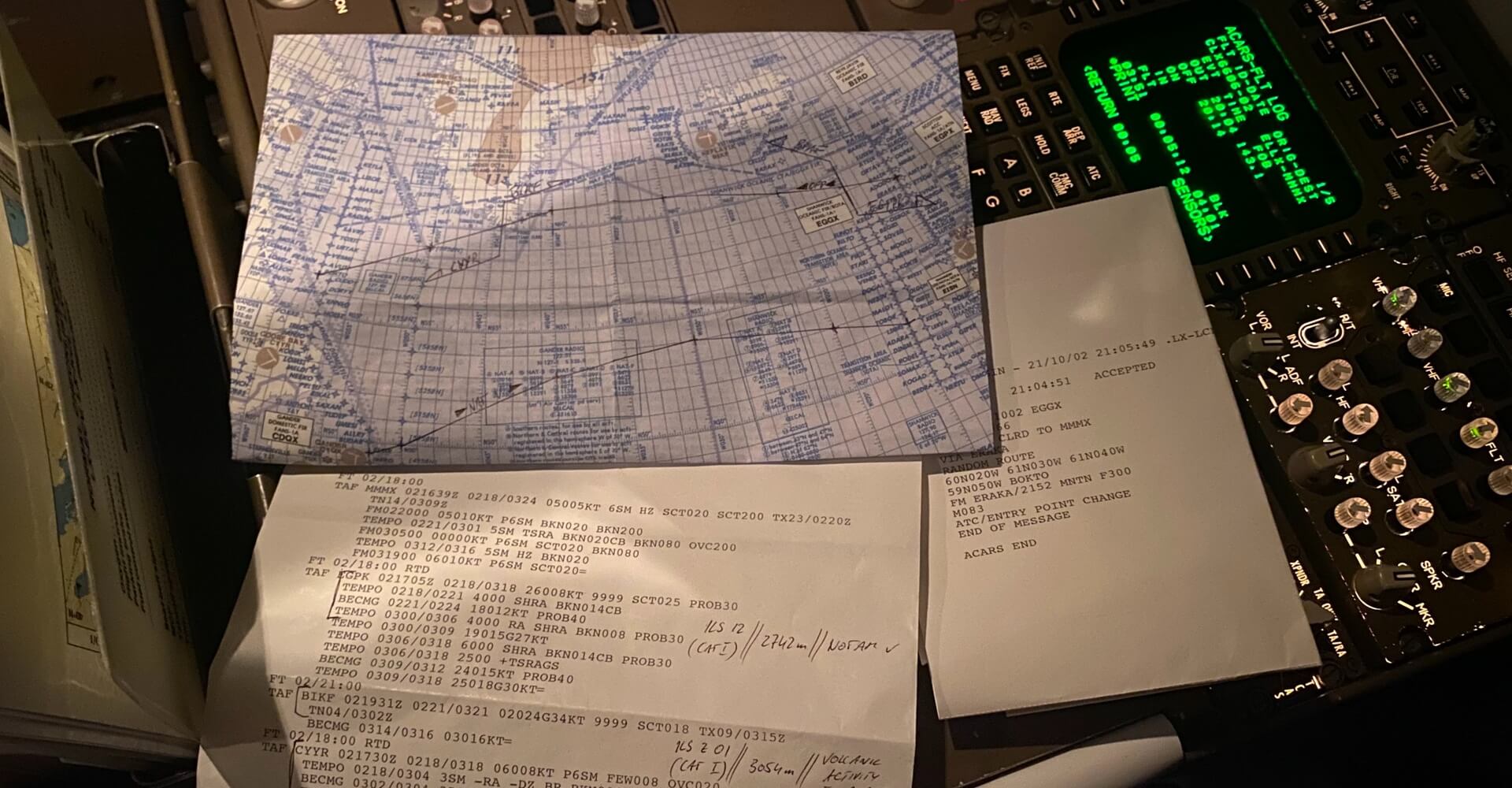
Aurora Borealis
On our way over the Atlantic, we are treated with some stunning sights of Northern Light. It’s always hard to catch on camera but it is so beautiful, as it dances and shifts its colors. Free light shows are one of the perks of the job.
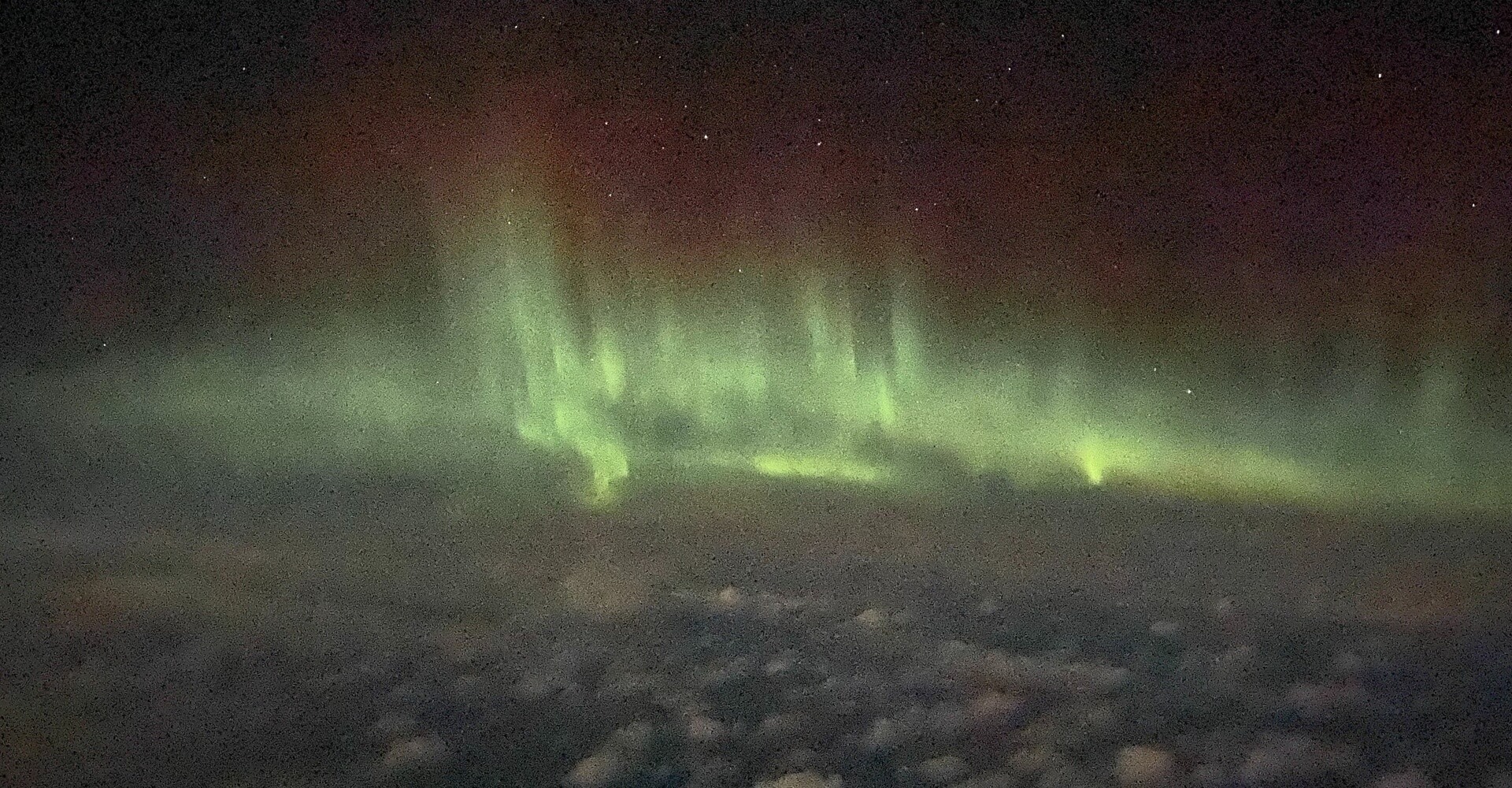
Rest time
4 Hours in flight and it’s time to wake up the captain and my turn to take a nap. The Boeing 747 has two bedrooms, each equipped with a bed. It doesn’t take long before I fall asleep to the humming sound of the engines and the gentle rocking of the aircraft. I’m deep asleep as the annoying “DING-DONG” sounds after about 3,5 hours, serving as a wake-up call.
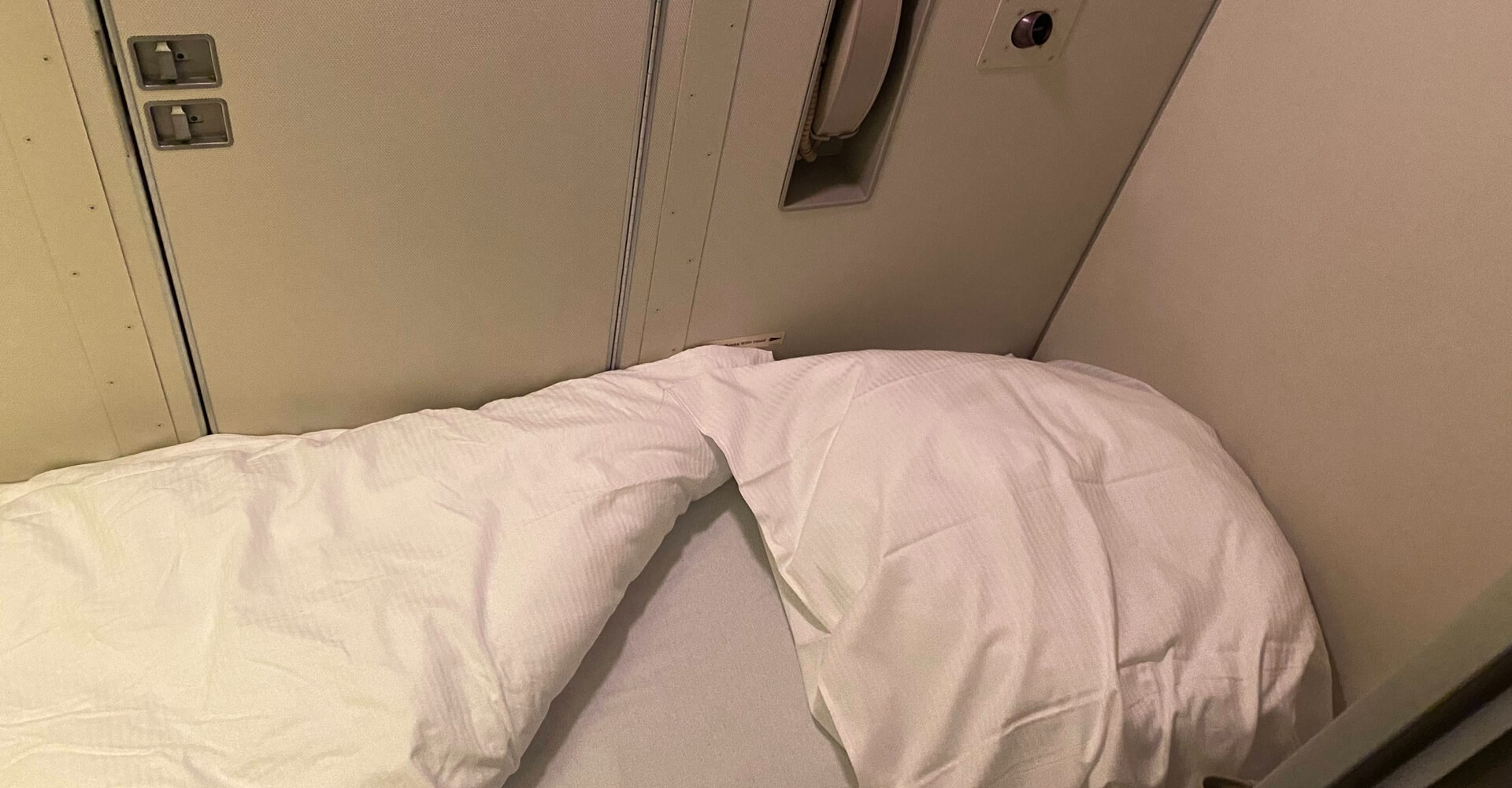
Time for coffee and to occupy my seat again. The relief pilot now goes for his rest, and I prepare myself a meal. Unlike passenger operations, the pilots in cargo operations heat up their own meals. It’s a question I funnily enough often get: “Is there really no one to heat up your meal and pour you a cup of coffee?”. It’s all part of the training of becoming a cargo pilot…
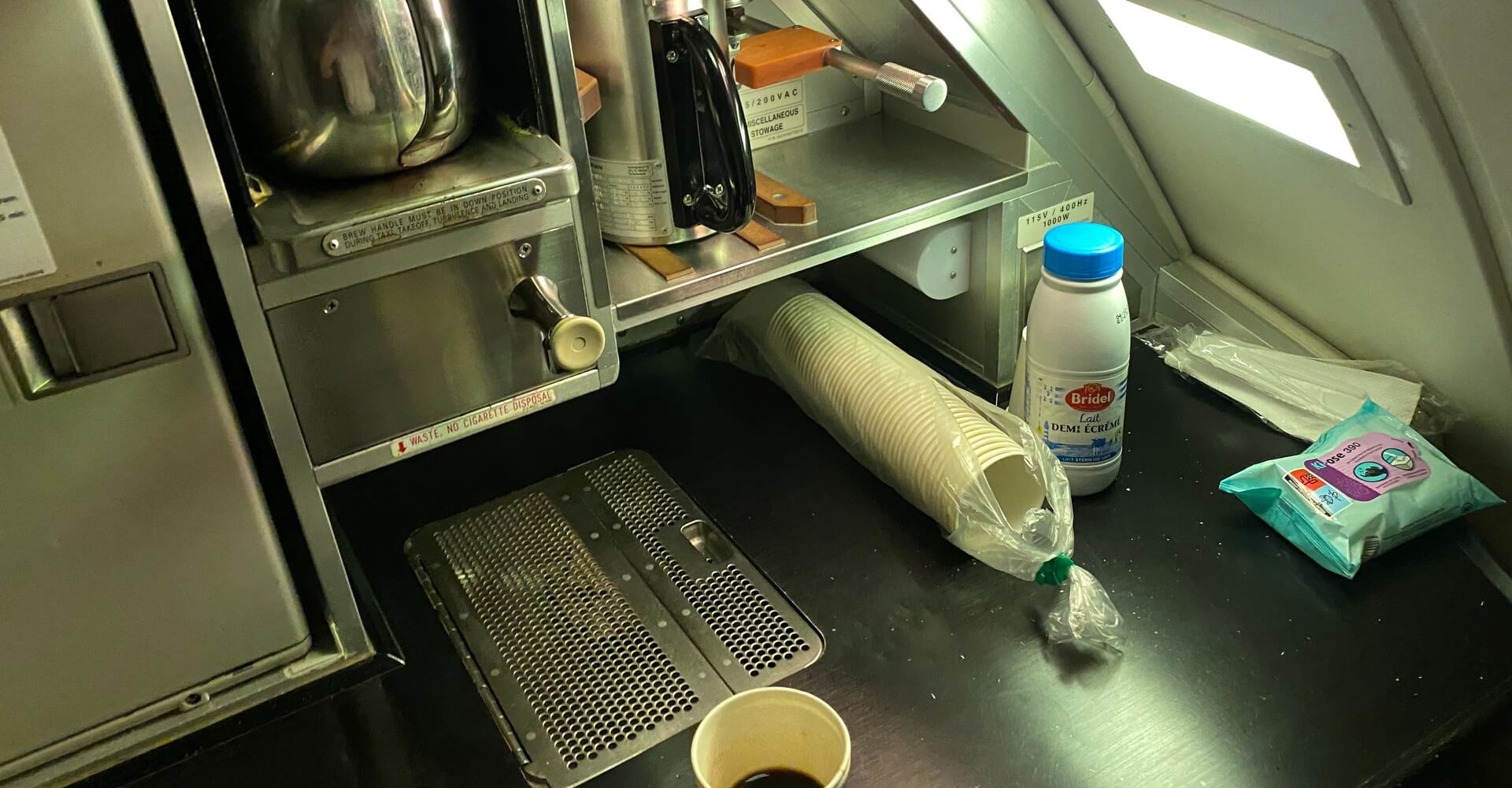
Two more hours to go
The end is in sight and with about two hours to go, I take the time to read through the specific procedures to form myself an image of the approach and landing phase. The advantage of these long flights is that there is no rush: with 2 hours to go, I have all the time in the world to check weather reports, run landing performance calculations, study the terrain in the environment and the arrival and approach.
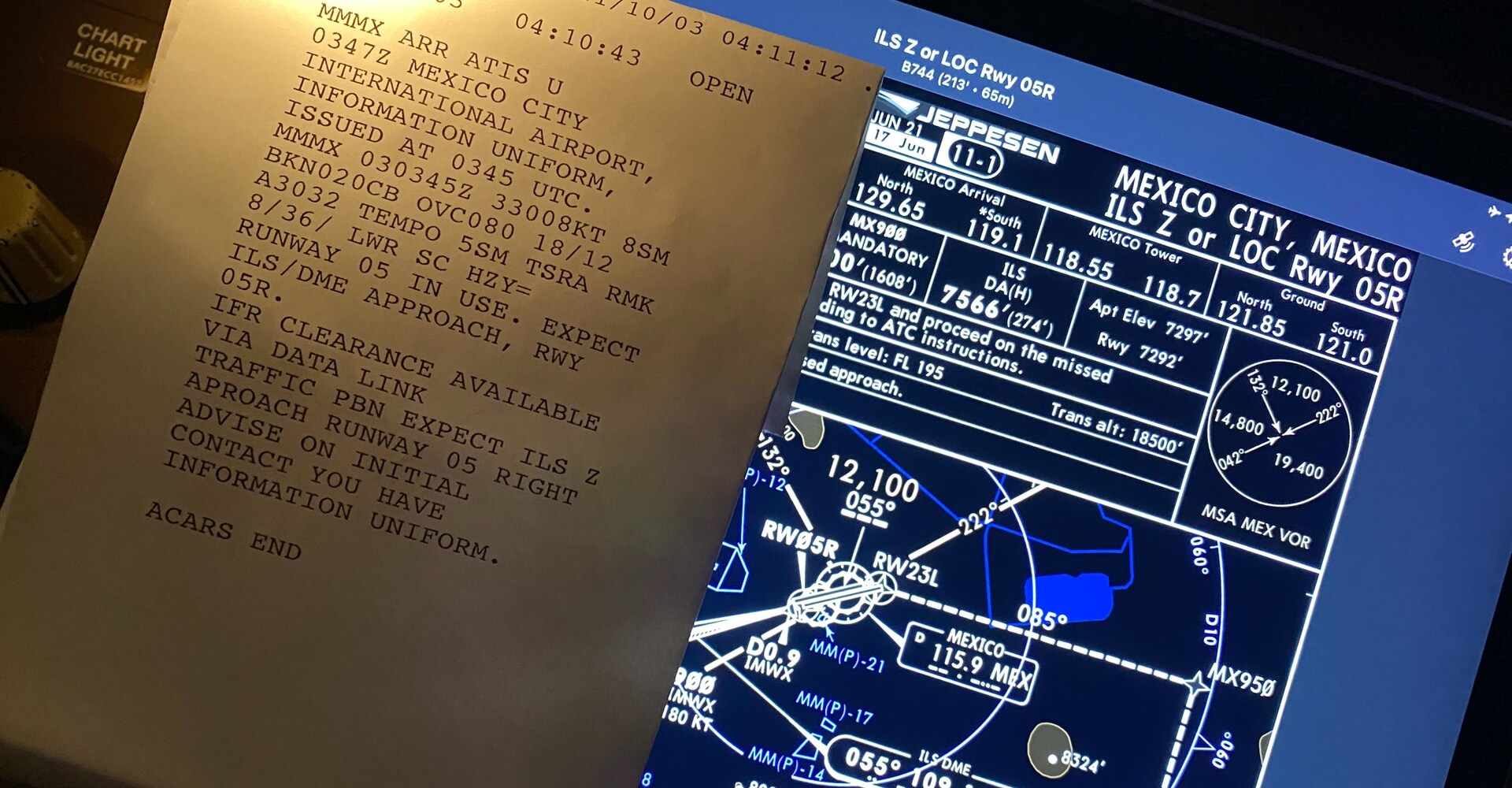
When we conduct an approach briefing, we focus on the specific threats and our destination has some. First, Mexico has an elevation of 7.300 feet. That has a couple of consequences: Our groundspeed will be a lot higher due to the thin air. The speed increases by 2% per thousand feet of elevation roughly. This means that we will be about 40km/hour faster than we would be at the same weight but at sea level. Secondly, the plane behaves differently: due to the elevation, there is less air over the wings and through the engines and that decreases the responsiveness of the airplane. Thirdly, Mexico is surrounded by very high terrain, with a minimum sector altitude going up to 19.400 feet. The arrival takes you close to that terrain and strict adherence to minimum altitudes and maximum airspeeds on the arrival and approach ensure that you keep a good separation. Next to that, Mexico-city often has thunderstorms (like today) and busy traffic (not at this hour luckily).
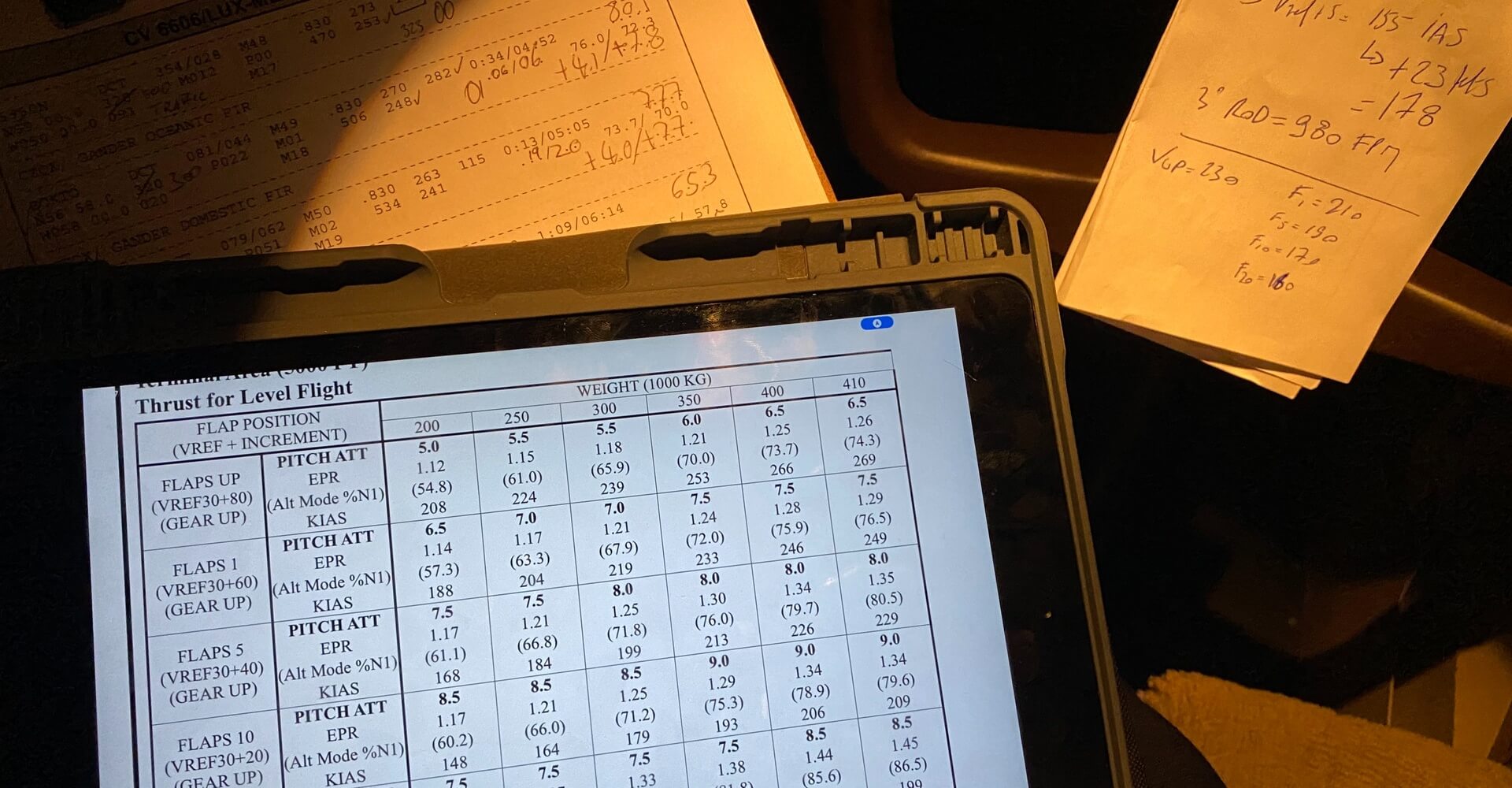
It’s an approach that must be well briefed and prepared, making sure you don’t have to start to plan things as you go. Once we descend below the tops of the highest mountains into the valley, all three of us are aware of the plan, what to look at and we remain mostly silent, sticking to standard callouts for flaps, landing gear, and checklists.
We pass through some heavy rain showers on our way down but at about 11.000 we start to catch the first glimpses of the city lights. Mexico City is huge and the approach takes you right over the city. We make our turn to final, and I disconnect the autopilot, flying the aircraft through the rain onto the wet runway. I pull full reverse thrust and let the automatic braking system do its job: as the runway is wet, we need nearly the full runway length to come to taxi speed.
The day is not over until we reach the parking position, switch off the engines and run our last checklists. As we are finalising our paperwork, the ground crew attach some stairs and get to work. They open the nose door, one of those cool features of our Boeing 747 freighters, and offload the freight.
Our day ends here but the plane stays only 2 hours on the ground, before continuing with another crew to Dallas. Planes on the ground don’t make money, so off she goes again!
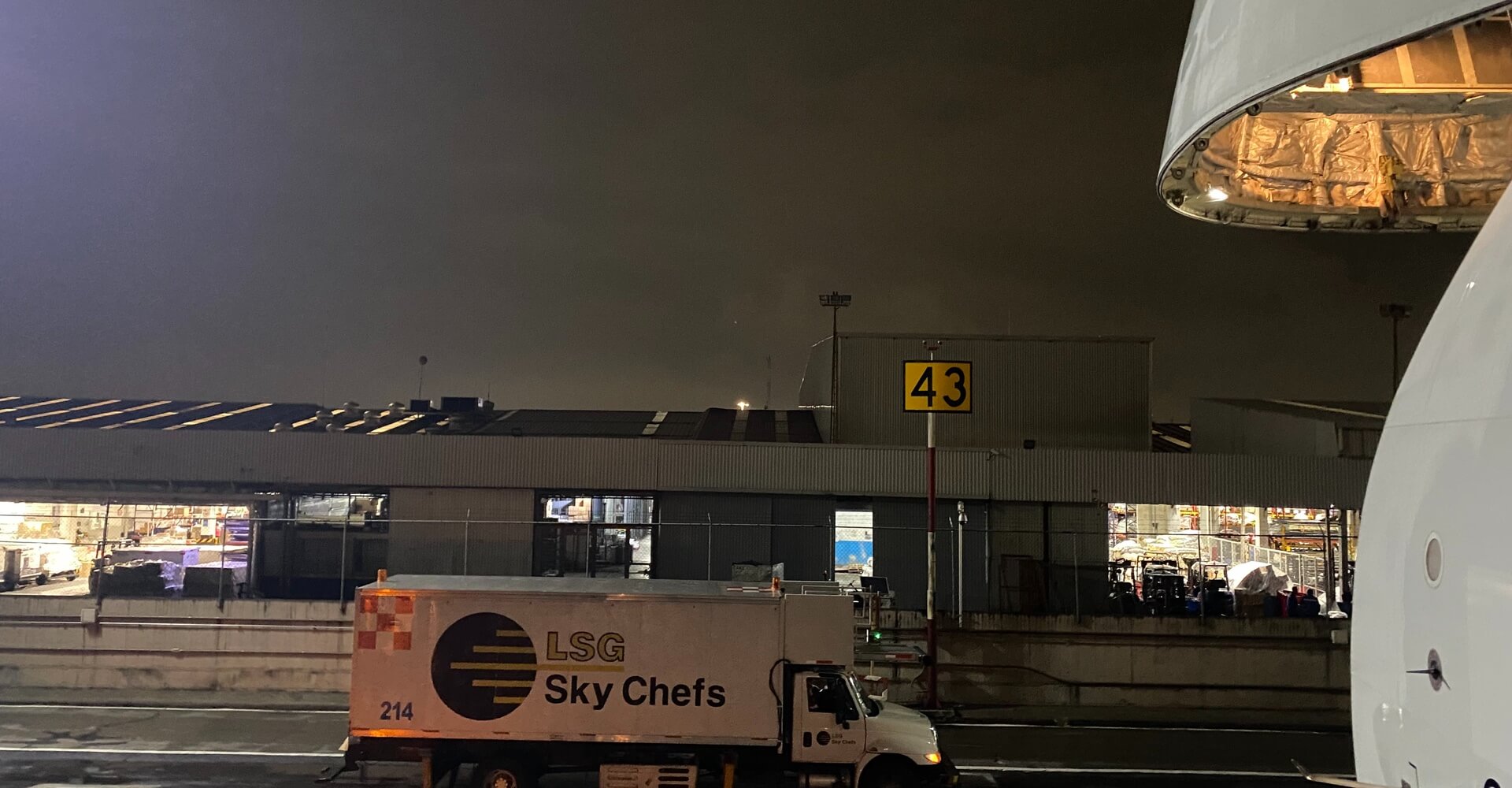

Pieter Brantegem
Safety manager and airline pilot